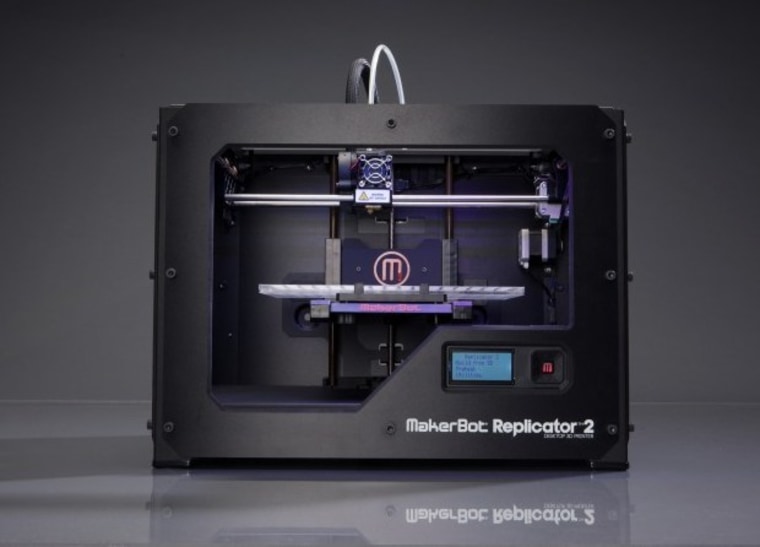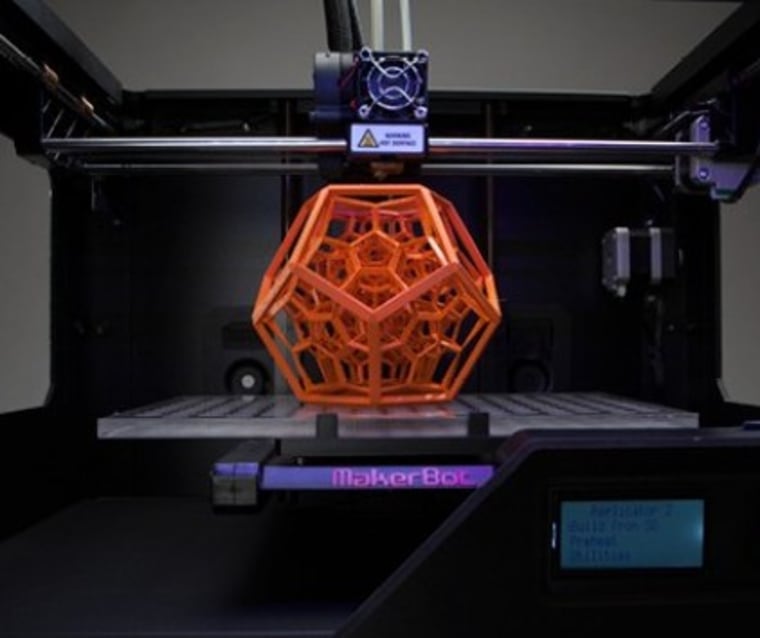
"Desktop fabrication machine" may sound more like an item in a sci-fi book than a device you can buy today, but they do exist, and they're getting better. Makerbot's new Replicator 2 can print out 3-D models with precision that's measured in micrometers.
The original Replicator made waves in the DIY community because it put many of the capabilities of commercial rapid-prototyping machines on your desk for less than $2,000. The copier-sized professional machines could run for hundreds of thousands, putting them out of reach of amateurs. But with the Replicator, you could take a 3-D model and bring it into the physical world for pennies.
Desktop fabrication sounds dry and industrial, but it may not be long before there's one of these in every home — for making simple items like mugs and gears, or for more complex things like circuit boards and prosthetics.
Makerbot devices perform "additive" manufacturing, which means they start with nothing and build from the ground up — like sculpting with clay. In the Replicator's case, it heats up a special type of plastic and lays down thin filaments next to and on top of one another, eventually creating the form of the model. More expensive machines use "subtractive" manufacturing, where they start with a block of material and remove what they don't need — like sculpting with stone.

The Replicator 2 extends the capabilities of the first, improving the resolution at which items can be printed and enabling larger creations. It exclusively uses a better kind of plastic filament, PLA, which is made from natural sources and allows for the improved precision. The new machine can lay down layers with less than half the thickness as before — 100 microns, or around 1/250th of an inch. That's about as thick as a piece of copy paper.
As a result, printed items are smoother and more detailed, requiring less care to make them presentable after coming out of the device. This is important, as more expensive machines have always been able to produce more touch-friendly products.
Makerbot isn't a big company; the machines are assembled by hand in their small headquarters in Brooklyn, even though on some level they're competing with the likes of Xerox and HP. But they're expanding, and have just opened a retail store in Manhattan, on Houston Street. There, you can watch Replicators in action, buy printed items and generally marvel at the future of home manufacturing.
Just as homes in the past weren't complete without a workbench and toolset, it's getting to the point where the same might be said of a personal fabricator. At $2,199 (or $2,799 for a turbocharged version), the Replicator 2 is still not quite a consumer item, but it's still an extremely powerful device for the price, enabling in the home what was once restricted to million-dollar facilities.
Devin Coldewey is a contributing writer for NBC News Digital. His personal website is coldewey.cc.